Spirea – the poor man’s shrub no more.
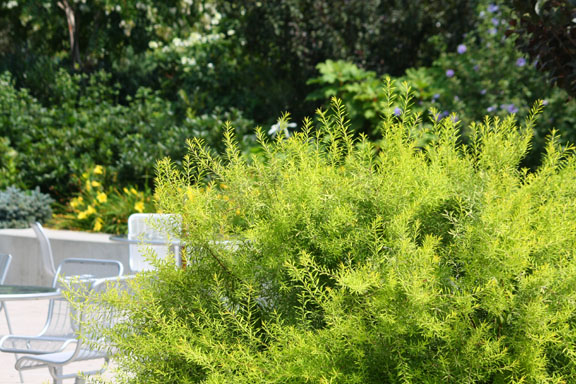
Fabulous airy texture and bright foliage are just two outstanding traits of spirea 'Ogon'. Photo credit; 66squarefeet.blogspot.com
One thing’s for sure – there’s no room for snobbery when it comes to gardening.
Before moving to this house 2 ½ years ago I used to smile politely when clients mentioned they had a deer problem and gave my all-knowing benevolent nod while saying “Ah yes, deer will eat anything if they are hungry enough you know…..”. I swear if anyone says that to me any more I’ll scream! Yes I do know – and I apologize to all those whom I have insulted with this inane platitude in the past. I still say the only reliable thing about deer is that they read the price tags, but I now have a much better appreciation of the problems they cause and a vested interest in researching plants which have been proven, at least here in the Pacific Northwest as ‘seldom damaged’ by deer.
One group of shrubs which I never really appreciated before were spirea. In England the old variety ‘Anthony Waterer’ (Spiraea x bumalda 'Anthony Waterer') was so overused that I lost interest in it. Yet moving here I noticed three huge, well established bushes thriving in my deer prone garden; reason enough to take a fresh look at the options. Here are a few of my favorites which are all reliably deer resistant, take full sun or partial shade and are ridiculously easy care.
Renaissance spirea (Spiraea x vanhouttei 'Renaissance'). This graceful, deciduous shrub features a massive display of pure white flowers and colorful orange-red fall color and offers improved disease resistance over older varieties. 5-6’ tall and wide, this is a flower arrangers favorite. Water regularly. Zones 3-7
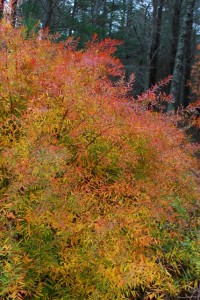
Think ahead to later seasons – spirea 'Ogon' promises a colorful display. Photo credit; gardenforeplay.avantgardensne.com
For fabulous foliage my favorite has to be ‘Mellow yellow’ spirea, also known as ‘Ogon’(S. thunbergii ‘Ogon’). The feathery foliage is reminiscent of the finely dissected bluebeard (Caryopteris) leaf except this is a bright shade of yellow-gold. Even if it didn’t bloom I would love it but the white flowers which dot its arching stems in April and May add an appealing freshness. Left to their own devices these shrubs become soft billowing bushes 5’ tall and wide. I have planted the dark leaved ‘Midnight wine’ Weigela in front for contrast, with a swathe of evergreen Rhododendrons off to one side. I am already thinking of other parts of the garden to add a cluster to. Hardy in zones 5-8.
Double Play® Big Bang Spirea (Spiraea japonica 'Tracy') –I have a group of these planted near my paperbark maple (Acer griseum) where the peeling cinnamon tree bark plays off the warm sunset tones of the spirea. The spirea foliage opens golden with orange overtones and shows rosy new growth before turning a fresh shade of summer green which acts as a foil to the tufty pink flowers. This variety offers the largest flowers of all and should be a butterfly magnet this summer. 2-3’ tall and wide and is hardy in zones 4-9.
For those who insist on a chartreuse variety of every plant then I suggest spirea ‘Limemound’. (Spiraea x bumalda 'Monhub'). The foliage opens yellow and softens to lime green before turning orange in fall. A good filler shrub for the mixed border where a compact 3’ dome is needed. Zones 3-9
My garden should have wheels according to my husband, who invariably has the task of heaving huge trees, shrubs and pots “just a few inches to the left”. On one such recent occasion, after hauling a 4’ “heap of twigs” from one side of the path to the other, I discovered several rooted cuttings left behind. I dug them up and planted them in an area of nasty, clay soil by the stream – and the cuttings have taken! (My husband is hoping they can live happily there as he’ll have to don waders if they need moving again). As far as I can tell this “heap of twigs” is just Japanese spirea (Spiraea japonica) with no particular claim to royal heritage. I include it simply to make the point that although of humble birth and lacking the jazzy colors or supersized flowers of others mentioned here, this really is a first class shrub.
Spirea – tolerant of most soil conditions, dozens of named cultivars and varieties all of which are ignored by deer and rabbits, easily propagated (i.e. free plants if you want them), foliage in shades of green, lime, orange, and dusky purple, flowers in white or pink, beloved by bees, butterflies and even hummingbirds and ranging in height from 1’ to 6’ tall – I’m sure you have room for a few. No garden snobs here!
UPDATE! Both my books, Fine Foliage (St. Lynn's Press, 2013) and Gardening with Foliage First (Timber Press, 2017) feature LOTS of combination ideas for spirea. Check them out! (These affiliate links will save YOU money and earn me a few pennies towards my next must-have spirea :))
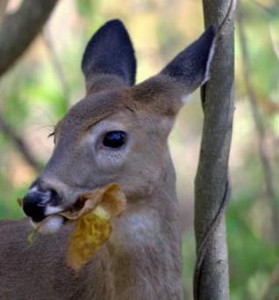
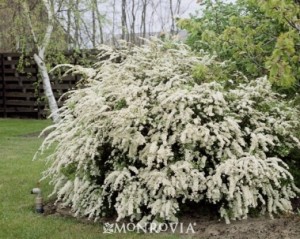
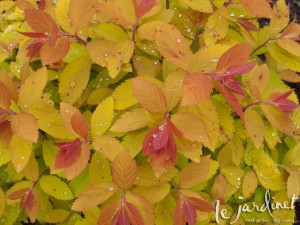
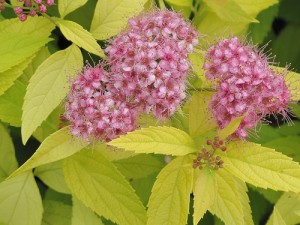
I absolutely love everything about my Anthony Waterer spirea! I also have a couple of other varieties, and they are all great shrubs. I tend to love what grows and prospers, so definitely no snob here!
I was thinking of you today Deb as I worked on my woodland garden! The S. 'Ogon' is in a transitional area between our open garden and the woodland and seems perfectly suited there. Like you I am learning to take my cue from what prospers.
Several years ago I had one of the Ogon spireas and it succumbed to a heavy snow storm one winter. I looked all over for another one but couldn't find one until I noticed a local nursery had one on their front lot, I made an immediate, crazy turn to rush in and buy one of the last two they had. It's such a happy, little shrub all yellow and frilly, I just love to look out my kitchen window and see it. I have to keep it trimmed back in size a bit more than I would like but it's worth it. I have been planting more shrubs in the gardens as they are less maintenance than the perennials — in some cases at least. A little easier on old backs!
Our cars should come with a bumper sticker which says 'may stop suddenly for plants!'
I may have to adjust the position of a few of mine as they are encroaching on an Arakawa maple so the beauty of the foliage of both is being compromised. I should still manage to keep the weigela in front though. I want to allow it to reach its full size as a frothy backdrop to that part of the border.
I'm also planting more shrubs now and being very selective of the perennials I keep.
Thanks Karen for this informative post. I have never been a big fan of Spirea but have noticed the new varieties you've mentioned. Since I love white flowering plants I will check out "Renaissance". In the photo you used I noticed a white birch in the background and it reminded me of a former article of yours on pairing_this is adding some more conceptual ideas for a natural border I will be developing for a client on the verge of a wooded area in her backyard. It does add a different texture to the existing rhodos on site. Thank you and I also love your newsletter. All the hard work you did this winter is paying off. Seeing the You Tube video made me smile as we have never spoken personally and so loved your wit, accent, smile and those great expressive eyes!
Hi Elaine – love your idea of pairing Renaissance with white birch although you may do better with a shorter variety so as not to hide the tree bark with foliage later on.
Glad you enjoyed the newsletter too – including the You Tube clip! Thanks for all your support and encouragement.
I wonder sometimes what gardening conditions garden snobs are so lucky to have, that they can afford to turn their nose up at certain plants! Those of us with less than perfect conditions (or skills) are just happy when something thrives… I've always loved spirea, because we had one when I was growing up. It's kind of an "old-fashioned" plant here – something you see in neighborhoods built before about 1970.
Old fashioned is good. Hey if 1970's is considered old fashioned then I'm approaching antique value!
Spirea overused? Yes!
Useful? You bet!
There are gardening situations where only a Spirea shrub will do. As maligned as it may have become in some gardening circles, I cannot work without it.
So true Allan!
Such similar issues and emotions with rabbits! Haha, if only my own garden had wheels or at least I had a few more muscles, happy gardening:~)
You too Foxglove Lane!
Hi Karen, I have always been a fan of spirea despite its overuse. This afternoon I moved my S. thunbergii ‘Ogon’ that has been languishing in half-shade. I love those fine leaves especially.
The color will be much brighter in sun but they still seem to grow well in part shade.
Karen,
Take a look at my book 50 Beautiful Deer Resistant Plants from Timber Press. It could be valuable to you and your clients.
Ruth
[…] on http://www.lejardinetdesigns.com Share this:TwitterFacebookLike this:LikeBe the first to like this […]